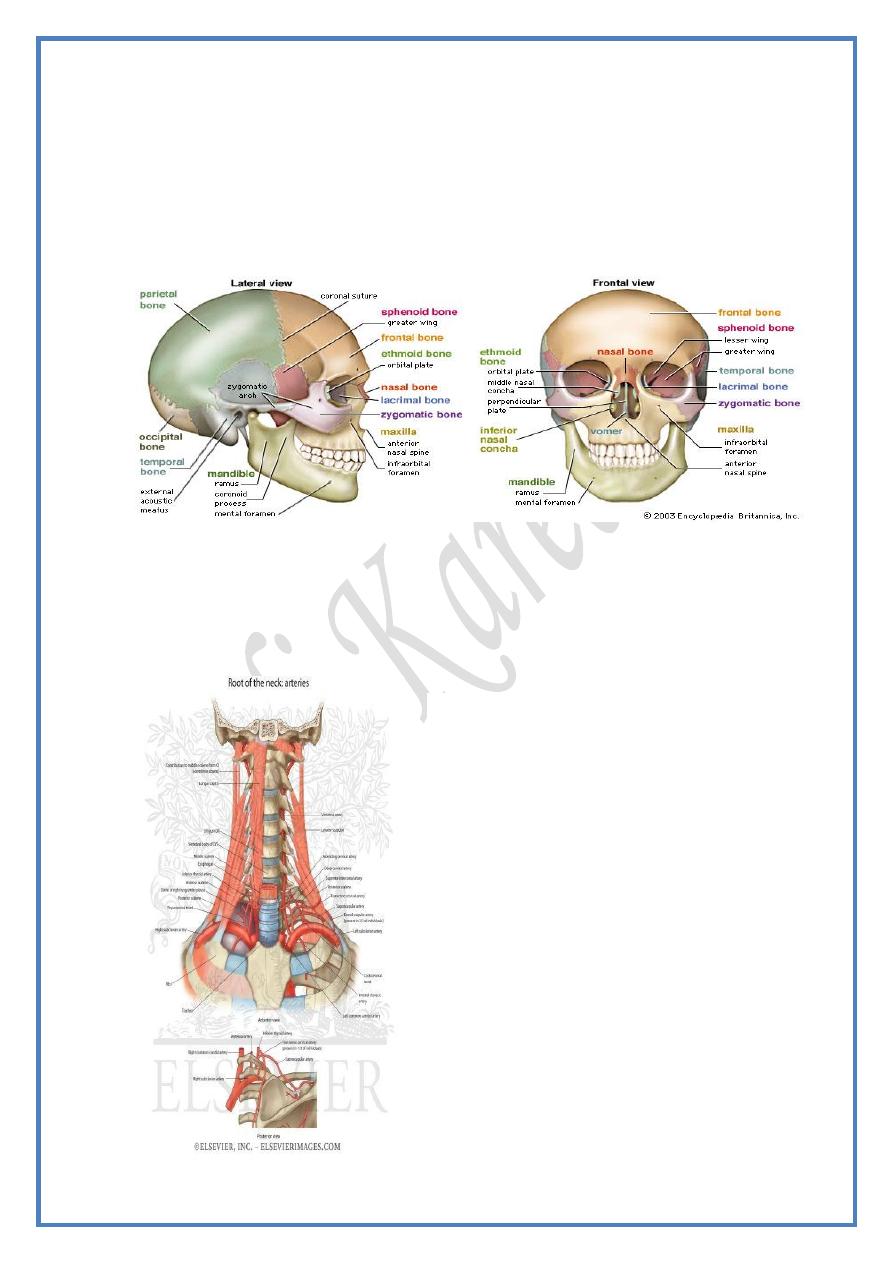
ANATOMY
HEAD & NECK
Dr. Nawfal K. Al-Hadithi
Lec . 16
The Lymphatic Drainage
By : Ali Kareem
مكتب اشور لالس تنساخ
2013 – 2014
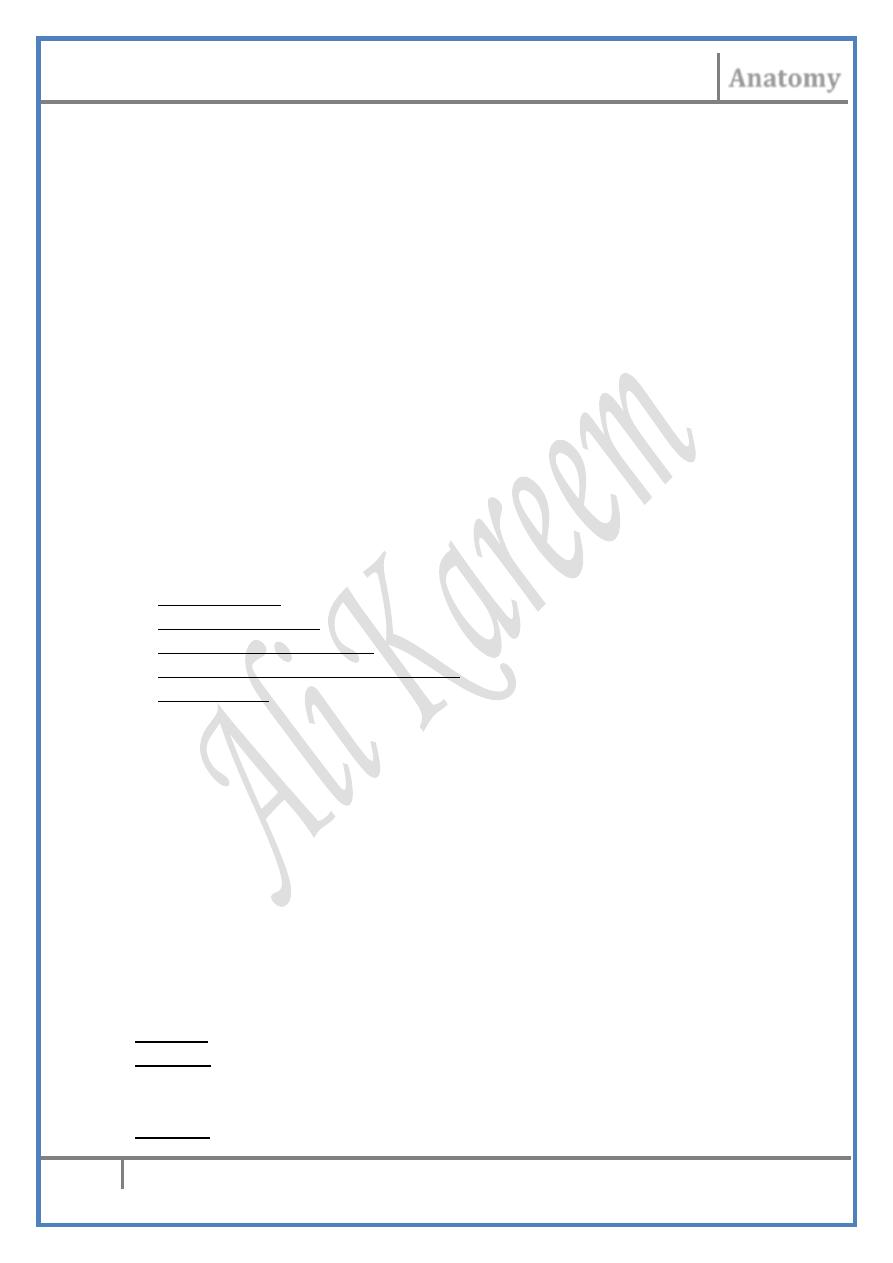
Head & Neck Dr. Nawfal K. Al-Hadithi
Anatomy
2
Lec. 16 The Lymphatic Drainage
Lymphatic drainage of the head & neck :
- Lymph from H & N is collected into two major circles of lymph
node chains, superficial & deep circles
- From both circles, lymph is eventually collected to the deep
cervical lymph nodes which lie along the IJV between the two
circles
- Deep CLN, as they lie along the IJV is roughly divided into
superior & inferior groups, each of which is further divided into
anterior & posterior
- Of the anterosuperior group, the jugulodigastric node is of special
importance since it collects lymph from the tongue & palatine
tonsils
- Of the posteroinferior group, the juguloomohyoid node is of
special importance since all lymph from the tongue pass directly to
it bilaterally before it is collected in the jugular lymph trunk
- From the deep CLN, lymph is collected into the jugular lymph
trunk, then to the thoracic duct (left side) & right lymph duct
Superficial circle :
1- Submental LN
2- Submandibular LN
3- Preauricular (parotid) LN
4- Post (Retro) auricular (mastoid) LN
5- Occipital LN
6- Mandibular LN
7- Buccal LN
8- Anterior jugular LN
9- External jugular LN
Deep circle :
1- Pretracheal LN
2- Paratracheal LN
3- Retropharyngeal LN
(10) : DEEP CERVICAL LN
Submental LN :
Position : Submental triangle between the two anterior bellies of digastric
Afferent : Wedge shape piece between the two lower canines including
the lower incisors, their gum, lower lips, floor of the mouth &
tip of the tongue
Efferent : Submandibular & anterosuperior group of DCLN
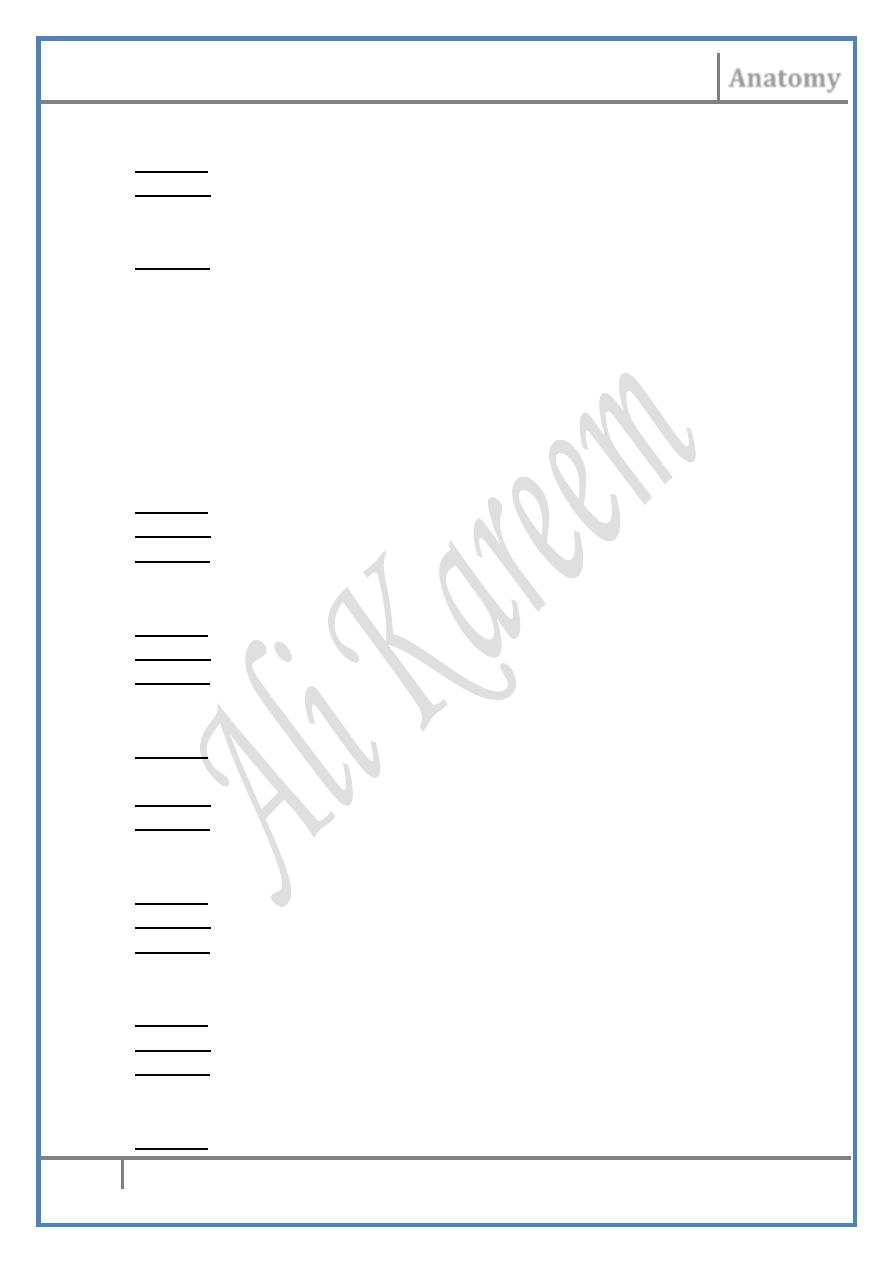
Head & Neck Dr. Nawfal K. Al-Hadithi
Anatomy
3
Lec. 16 The Lymphatic Drainage
Submandibular LN :
Position : Submandibular triangle in & around the gland
Afferent : Area of the face anterior to the facial artery, anterior nose,
gums, tongue, hard palate, submandibular gland & adjacent
nodes (submental, buccal & mandibular)
Efferent : Anterosuperior group of DCLN
Preauricular LN :
Position : In & around the parotid gland
Afferent : Anterolateral part of the scalp, temporal fossa, part of the face
lateral to facial arteries, external ear, lateral part of eyelids &
parotid gland
Efferent : Anterosuperior group of DCLN
Retroauricular LN :
Position : On the mastoid process
Afferent : Posterolateral part of the scalp & external ear
Efferent : DCLN
Occipital LN :
Position : In the apex of posterior triangle along the occipital artery
Afferent : Back of the neck & posterior part of the scalp
Efferent : DCLN
Mandibular LN :
Position : At the lower border of the mandible as the facial artery enters
the face
Afferent : Adjacent area of face & neck
Efferent : Submandibular LN
Buccal LN :
Position : On buccinator
Afferent : Adjacent area of the face, nose & lips
Efferent : Submandibular LN
Anterior jugular LN :
Position : Around the AJV
Afferent : Adjacent area of neck
Efferent : DCLN
External jugular LN :
Position : Around the EJV
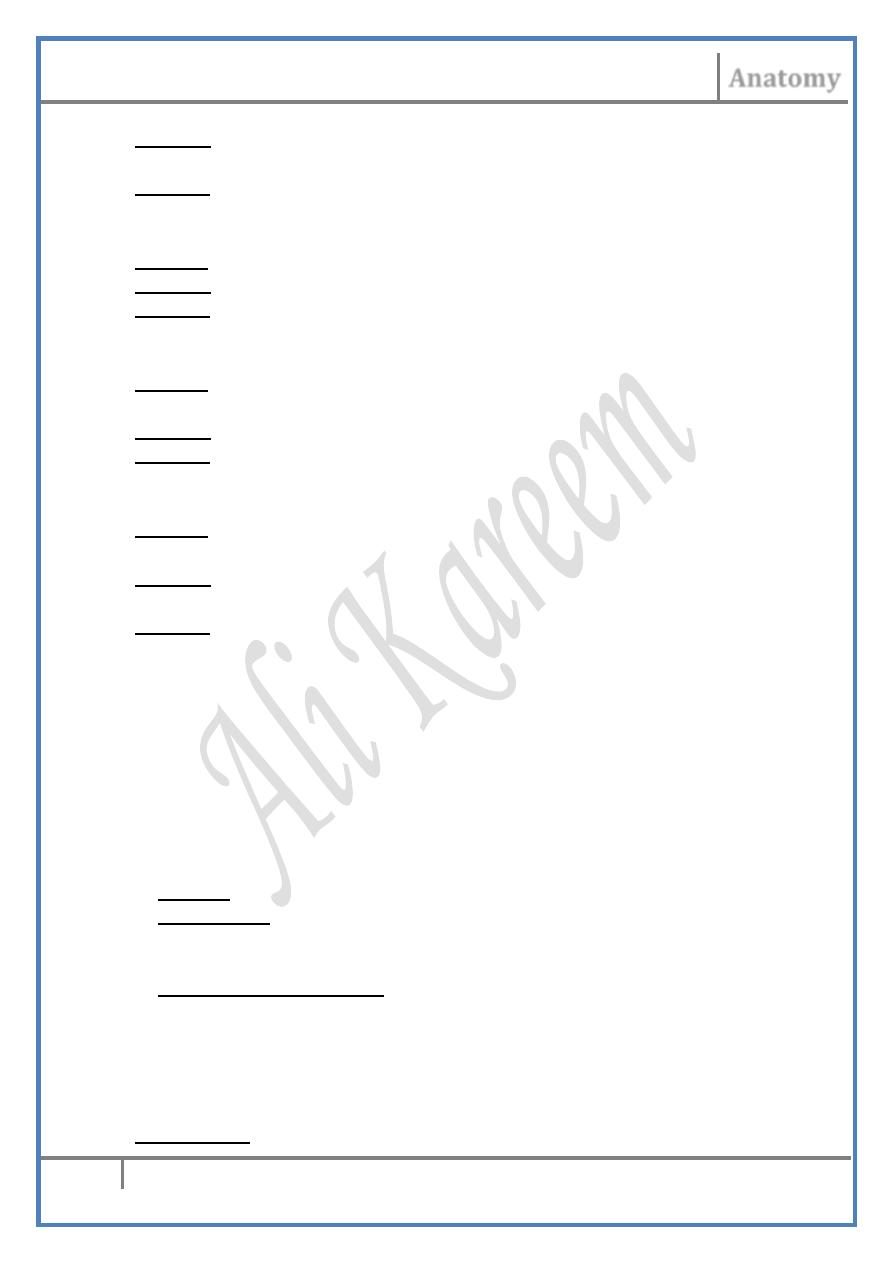
Head & Neck Dr. Nawfal K. Al-Hadithi
Anatomy
4
Lec. 16 The Lymphatic Drainage
Afferent : Adjacent area of the cervical skin, parotid region & lower
lateral part of the external ear
Efferent : DCLN
Pretracheal & prelaryngeal LN :
Position : Anterior to trachea & larynx
Afferent : Trachea, larynx, adjacent parts of the thyroid gland
Efferent : DCLN
Paratracheal LN :
Position : Between the trachea & oesophagus near the recurrent laryngeal
nerve
Afferent : Trachea, oesophagus & lateral part of the thyroid gland
Efferent : DCLN
Retropharyngeal LN :
Position : Anterior to the prevertebral fascia, behind the pharynx &
oesophagus, its enlargement causes dysphagia
Afferent : Pharynx, oesophagus, posterior part of nasal cavity, paranasal
sinuses, nasopharynx, oropharynx & back of the tongue
Efferent : DCLN
Parasympathetic ganglia in the head & neck :
- The parasympathetic system of the H & N is represented by FOUR
cranial parasympathetic ganglia which share in the supply of
structures recommending this type of autonomic supply
- These
are:
CILIARY,
PTERYGOPALATINE,
SUBMANDIBULAR & OTIC ganglia
- Each of the four possesses three roots:
1- Sensory : from the trigeminal nerve for common sensation
2- Sympathetic : Postganglionic branches from the superior cervical
sympathetic ganglion reaching via a branch from the
carotid system
3- Parasympathetic (motor) : from parasympathetic nuclei in the
brainstem
- Postganglionic branches of these ganglia contain fibers from all the
three modalities are furnished to the specific areas
Ciliary G. :
Sensory root : Nasociliary n. (Va)
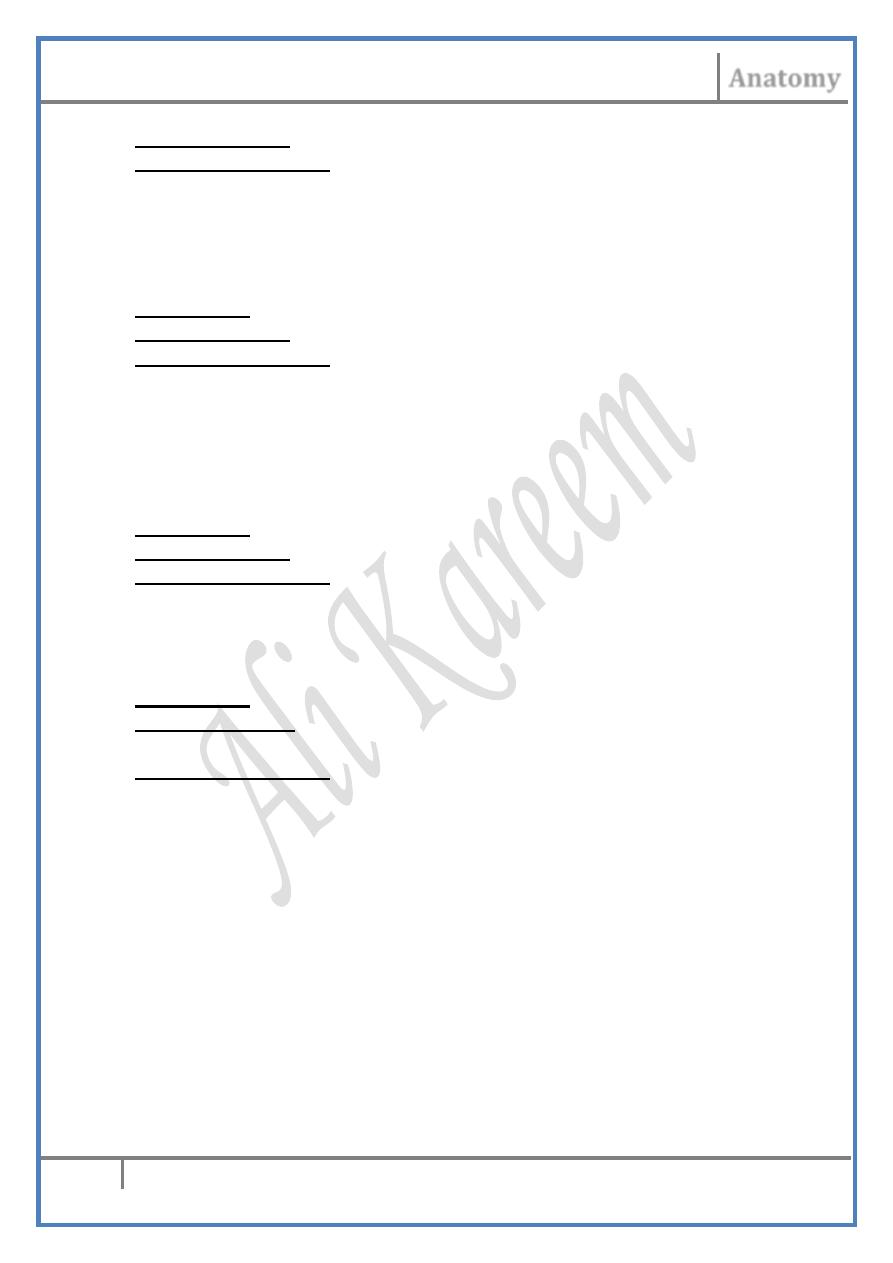
Head & Neck Dr. Nawfal K. Al-Hadithi
Anatomy
5
Lec. 16 The Lymphatic Drainage
Sympathetic root : Along Ophthalmic branch of ICA
Parasympathetic root : E-W nucleus in the midbrain – III - N. to
inferior oblique
Postganglionic branches (short ciliary n) :
- Ciliary & sphincter pupillae muscles
Pterygopalatine G. :
Sensory root : Maxillay n. (Vb)
Sympathetic root : (Deep petrosal n) Along ICA
Parasympathetic root : Superior salivary nucleus - nervus intermedius
greater petrosal nerve
Greater + deep petrosal nerves = vidian nerve (n. of pterygoid canal)
Postganglionic branches :
- Lacrimal, nasal, nasopharyngeal & palatal glands
Submandibular G. :
Sensory root : Lingual n. (Vc)
Sympathetic root : Along facial branch of ECA
Parasympathetic root : Superior salivary nucleus - nervus intermedius
chorda tympani
Postganglionic branches :
- Submandibular & sublingual salivary glands
Otic G. :
Sensory root : Auriculotemporal n. (Vc)
Sympathetic root : Along middle meningeal branch of maxillary artery
(ECA)
Parasympathetic root : Inferior salivary nucleus – IX - lesser petrosal
nerve
Postganglionic branches :
- Parotid gland
The temporomandibular joint :
- This is an articulation between the mandibular head & the
mandibular fossa on the undersurface of the squamous temporal
bone.
- Since both heads of the mandible belong to one bone, movement of
one TMJ will inevitably move the other one, therefore the TMJ is
regarded as a bilateral components of one cranio-mandibular
articulation.
The capsule :
The strong fibrous capsule is attached at the skull to:
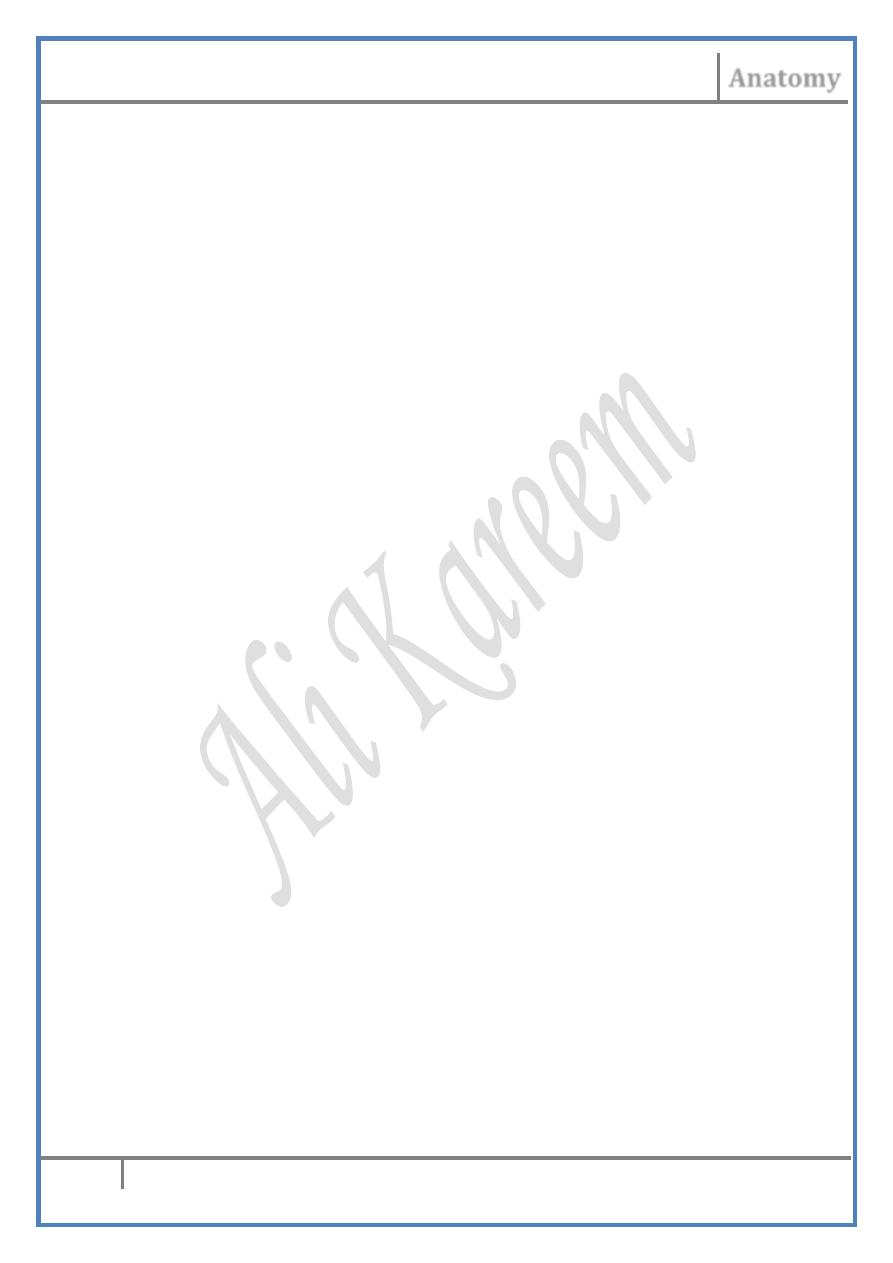
Head & Neck Dr. Nawfal K. Al-Hadithi
Anatomy
6
Lec. 16 The Lymphatic Drainage
- Eminentia articularis …… Anteriorly
- Squamotympanic fissure …… Posteriorly
- Margins of the articular surface …… on each side
The attachment on the mandible is around the articular surface except
posteriorly where the capsular attachment is much lower than anterior
level
The disc :
- The joint cavity is divided, by a fibrocartilagenous disc, into upper
& lower compartments.
- The disc is attached at the periphery to the underside of the annular
fibrous capsule.
- The disc concavoconvex anteroposterioly in the sagittal plane
Stability :
In addition to the bony contour & muscular attachment, stability of the
TMJ is enhanced by three main ligaments :
1- Lateral lig. : From the undersurface of the zygomatic arch passes
lateral to the neck of the mandible to be attached to the
posterior part of the neck, it prevents forward dislocation.
2- Stylomandibular lig. : From the styloid process down to the back of
the angle of the mandible.
3- Sphenomandibular lig. : From the spine of sphenoid to the lingula of
mandibular foramen.
The latter two ligaments pass medial to the joint.
Anterior dislocation of the mandible :
The TMJ is more stable in occlusion than open position since the
teeth stabilize the mandible on the maxilla
Articular eminence & tension of masticatory muscles (except
lateral pterygoid) prevent open mouth from anterior dislocation
Lax muscles & ligament with forced opening of the mouth will
lead to anterior mandibular dislocation which will not return due to
spasm of the three stabilizing muscles themselves
In order to reduce this dislocation, downward push on the molar
teeth for a moment before reducing the dislocation is mandatory to
overcome muscular spasm
Movements of the TMJ :
*Elevation-depression, (open-close) mov. :
- Axis : rotation occurs around a horizontal axis passing through
both mandibular heads
- Joint compartment : lower (below the disc)

Head & Neck Dr. Nawfal K. Al-Hadithi
Anatomy
7
Lec. 16 The Lymphatic Drainage
- Main muscles :
Open : digastric & lateral pterygoid
Close : other three masticatory muscles
*Gliding (side-to-side) movement :
- Axis: Rotation of the mandible around axis which lies just behind
the head on the other side
- Compartment: Upper (above the disc)
- Main muscles: Pterygoids on one side push the mandible to the
other
*Protractio-retraction movement :
- Compartment: Upper
- Main muscles: All masticatory muscles protract & passive recoil
retract
Blood & nerve supply :
- The joint is supplied by arteries & veins in the vicinity.
- Superficial temporal & maxillary arteries are the main distributors
- Auriculotemporal nerve is the main sensory nerve for the joint
Joint type :
TMJ is a typical synovial joint of ball & socket variety
ماكو صور هالمحاضرة هم
-
_
-
. وشيييكرن
:P
هااي
ﭼ
انت اخر محاضرة الي وياكمـ
Edited & Published by :
Ali Kareem
